Planes centenarians - C.160 Transall
One of the earliest European multinational aircraft programs began in 1959 year. It was jointly attended by Germany and France, working on the creation of a new military transport aircraft. Nord-Aviation, HFB and VFW jointly formed the Transport Alliance or Transall. In the process of collaboration, an aircraft was created, designated C.160 Transall. It was an average military transport aircraft, which was created for the needs of the German and French Air Forces. The first flight of the car made 25 February 1963 of the year. Serial production of this transport continued until the 1972 year and resumed in France in the first half of the 1980-s. Total for all time was built 214 such machines of various modifications. At the same time, the aircraft were in service with not only the two countries that participated in their development, but were also exported to South Africa and Turkey.
The C.160 Transall was designed for tactical transportation and parachuting and landing of troops and military cargo. Depending on the purpose of the aircraft, a cargo hatch was present in the rear part of its fuselage, used for unloading, loading and landing military equipment, and for throwing paratroopers on the plane there were two doors on both sides of the fuselage. The aircraft had a cargo cabin of the following dimensions: length - 13,51 m, width - 3,15 m, height - 2,98 m. Such a cargo cabin allowed without special problems to carry 88 paratrooper paratroopers or up to 93 soldiers in full combat display. To facilitate the process of unloading and loading equipment and cargo onto the aircraft, the height of the cargo compartment floor and loading ramp could easily be changed using a special mechanism mounted on the main landing gear. In addition, there was the necessary loading equipment, and on the floor were located rollers and rail guides for convenient movement of goods. The cockpit was located in front of the fuselage, in which most of the electronic equipment was also installed.
Already at the end of the 1960, the C.160 became the main transport aircraft in the French and German Air Forces. These aircraft were actively used both as part of military operations (including in Afghanistan and Africa), and in various humanitarian missions around the world. In France, the military service of this aircraft began in November 1967, when, as part of the French Air Force, one of them managed to form the first unit. In the German Air Force, operation of the aircraft began in April 1968 of the year, it was then that the first cars entered service with transport wings.
Transall quickly became the main transport vehicle of the French Military Aviation Transport Command. But the operation of the C.160F (French version) rather quickly demonstrated a relatively short range of this military transport aircraft. At the same time, France needed an aircraft with limited strategic capabilities, which could provide troops in the overseas territories of the country, including the former colonies in Polynesia in the Pacific and the Antilles in the Caribbean. As a result, at the request of the military, a new version of the aircraft was created — C.160NG (Nouvelle Generation); in the French Air Force, from December 1981, 35 of such aircraft was supplied. This modification was distinguished by the presence of additional fuel tanks, but when using them, the aircraft payload fell. For this reason, when it was necessary to carry a heavy load over a long range, the plane rose into the sky with the maximum take-off mass, and already in the course of the flight it was refueled from the tanker aircraft.
Operation of the French transport aircraft C.160 Transall began to decline in 2010 year. This was due to the expectations for new Airbus A400M military transport aircraft (50 aircraft ordered). However, the delivery of these machines is delayed. As of the end of 2013, the 39 of the C.160 Transall remained in service with the French Air Force, mainly in the C.160NG version. According to the information on the 2011 year, the German Air Force had 80 aircraft C.160D (German version).
Description of construction
The military transport aircraft C.160 was designed in a normal pattern with a straight high-placed all-metal wing. The fuselage of the semi-monocoque type aircraft was assembled from an aluminum alloy and had a circular cross section having a flattening at the bottom. In the forward part of the fuselage was the cockpit, in which there were two pilots and a flight engineer. Sealed cargo compartment had a rear cargo hatch-ramp, located in the oblique upward tail of the fuselage, as well as hatches for parachute landing, one on each side. The landing gear was a three-bearing with a tandem arrangement of dual wheels of the main struts, equipped with a hydraulic drive. To reduce the slope of the loading ramp, the main landing gear of the aircraft could be partially broken.
In order to facilitate the process of loading and unloading cargo and military equipment, the height of the cabin floor and loading ramp could be changed using a special mechanism mounted on the main landing gear. The C.160 aircraft was able to transport cars and trucks, armored personnel carriers, Tanks, freight containers and other bulky goods with a total weight of up to 16 tons. It was also possible to drop individual loads weighing up to 3 tons in flight from a height of 9-8 meters. Only 3 people could carry out the re-equipment of the cargo compartment for transporting soldiers, spending 1,5 hours of their time on it.
The powerplant of the C.160 military transport aircraft was represented by two Rolls-Royce "Tyne" Rty.20 Mk.22 TVDs with an 6100 power of hp. each. Four-bladed reaming screws with a diameter of 5,5 meters were installed on the aircraft. The stock of fuel was in four tank-compartments located in the wing, there could put a little more than 19 thousands of liters of fuel.
The C.160 Transall aircraft were equipped with the RDN-72 Doppler navigation radar, in addition there was an auxiliary computer Kruse Nadir, Omer weather radar ORB-37, a TRT AHV-6 radio altimeter, and an automatic flight control system that included two gyrocompass , two course and autopilot PA-SI. Also on the plane were installed radio compass, rangefinder equipment, instrumental landing system EAS RNA 720 and receiver omnidirectional VHF radio beacon.
In total, the 1967 1972 serial aircraft C.169 Transall were produced from 160 to 1972 years. In 1976, their production was temporarily stopped and resumed only in 160, the assembly of modified cars began. The first flight of the modified aircraft C.1981NG made in April 1985 of the year. In total, before the aircraft was taken out of production in 35, 160 aircraft were produced in this design. Compared with the base model, the C.XNUMXNG was distinguished by its improved flight performance, new electronic equipment, the in-flight refueling system, enhanced wing structure, which provided the ability to install an additional fuel tank to increase the flight range and no cargo door on the left side. A modified version of the aircraft retained the ability to take off even from small airfields with a ground runway, which combined it with aircraft of the first release.
In the transport version, C.160NG could take on board up to 93 soldiers or up to 88 fully equipped paratroopers, in addition to the 66 wounded on a stretcher with four escorts could be loaded on board. It was also possible to convert the transport into a hospital, search and rescue or fire options. On board could accommodate an operating room designed to provide emergency medical care to wounded soldiers. Modular sets of spare parts made it possible to use this aircraft as an electronic reconnaissance aircraft C.160SE or a sea observation aircraft C.160S.
In addition, four C.160NG transport aircraft were reequipped to provide communication with French strategic submarines equipped with ballistic missiles similar to the American Navy's EC-130Q Hercules. Also, two aircraft were more thoroughly reworked under the standard Gabriel (Gabriel) with several fuselage fairing, large retractable dome-shaped fairing in the lower nose of the fuselage and gondolas at the ends of the wing.
Flight technical characteristics of C.160 Transall:
Overall dimensions - wing span - 40 m, wing area - 160,1 square. m, length - 32,4 m, height - 11,65 m.
Empty weight - 29 000 kg.
Normal take-off weight - 44 200 kg.
Maximum take-off weight - 51 000 kg.
Internal fuel - 19 050 l.
The power plant - 2 TVs Rolls-Royce Tyne RTy.20 Mk 22, power 2х6100 HP
The maximum flight speed is 593 km / h.
Cruising flight speed - 513 km / h.
Practical range - 8858 km.
Practical ceiling - 8200 m.
Crew - 3-5 people
The payload is 88 paratroopers or 93 soldier, 66 stretcher and 4 escort, or 16 tons of cargo.
Information sources:
http://www.airwar.ru/enc/craft/c160.html
http://avialand.org/voennye-samolety/211-transall-c.160-jekspluatacija.html
http://aviadejavu.ru/Site/Crafts/Craft21272.htm
http://airspot.ru/catalogue/item/transall-c-160-transall
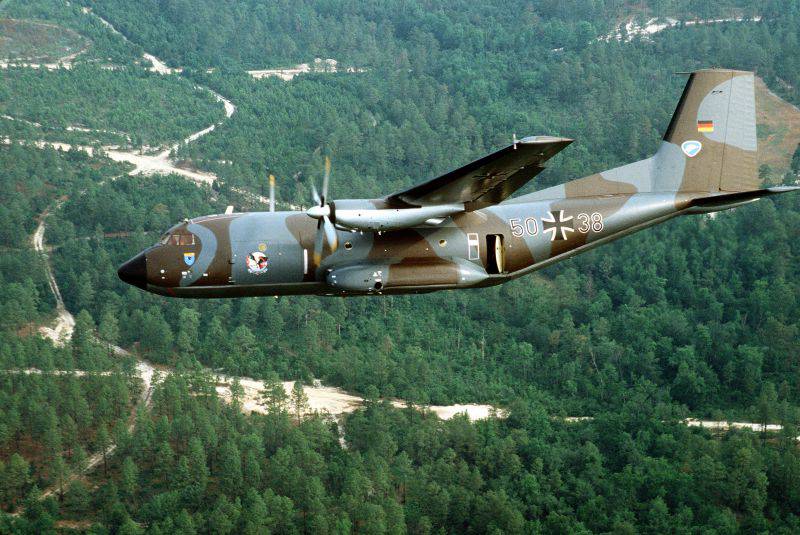
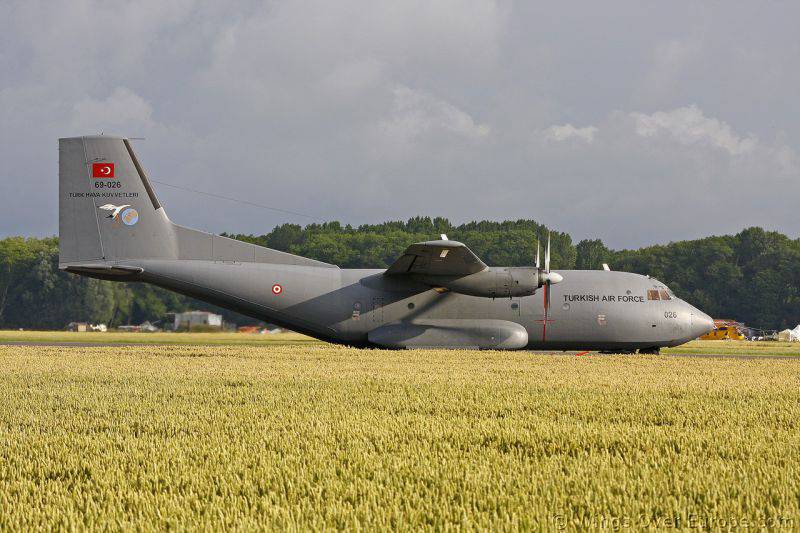
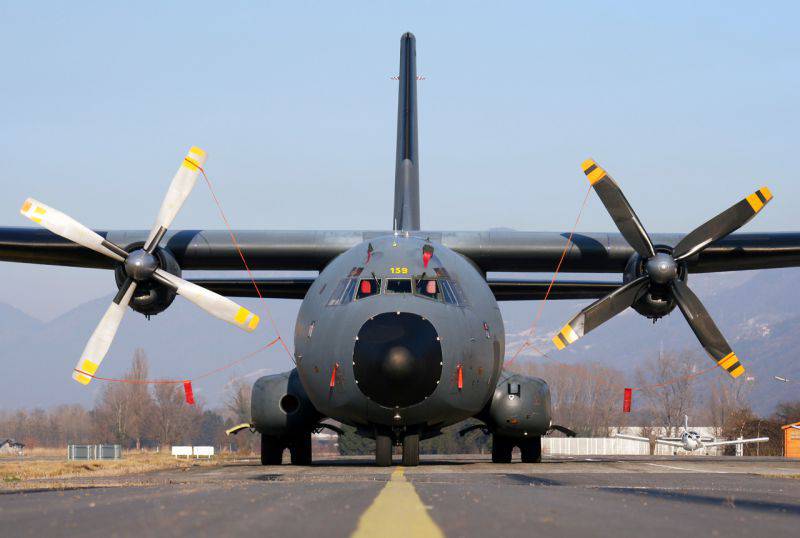
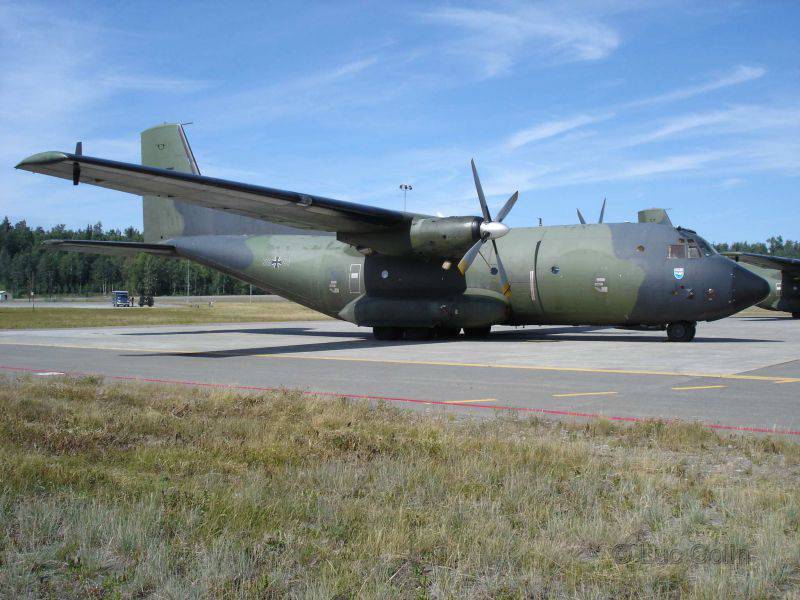
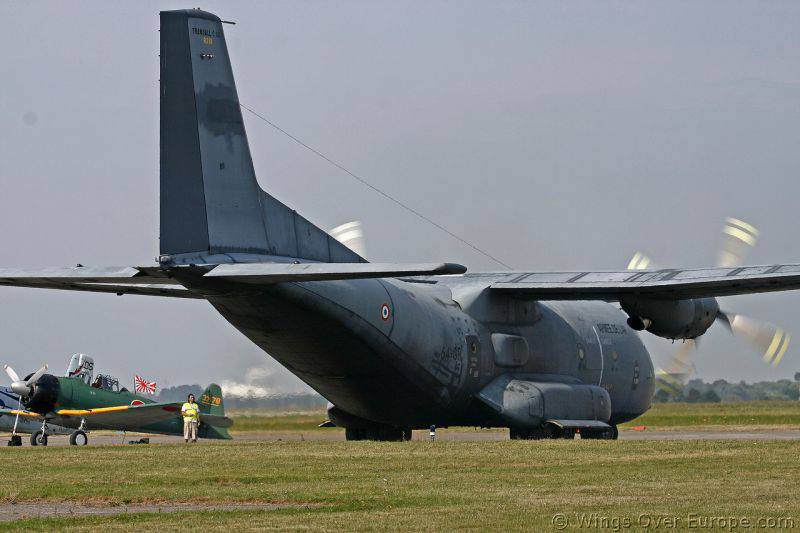
Information